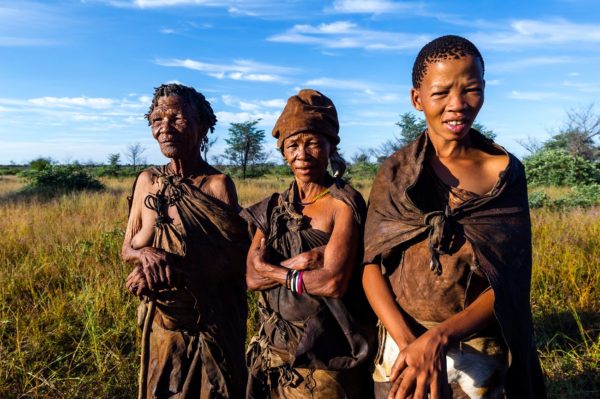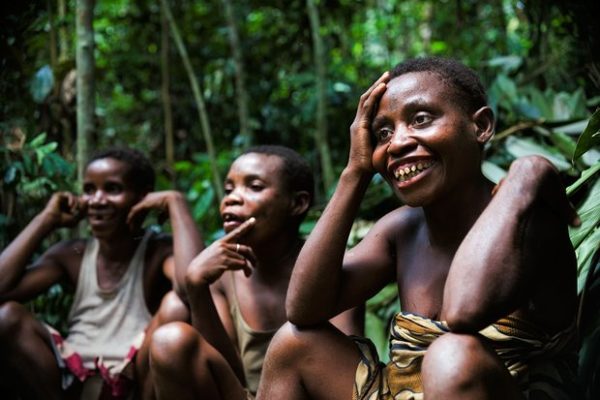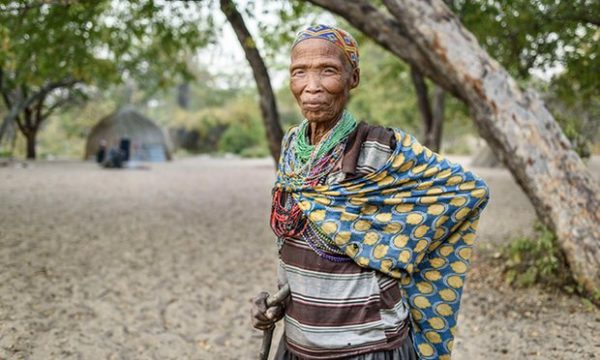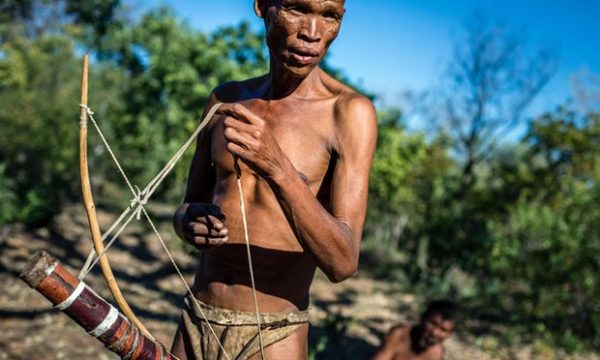
Often, we talk about endangered species, mostly referring to animals or plants that are seriously at risk of extinction. What we have failed to realized over the years is that there are equally endangered human beings who are also facing this same risk.
We easily forget about the human beings, and are constantly advocating for the animals. On August 28, 2016 a sad article concerning one of the world’s oldest indigenous people appeared in The Guardian. It revealed an issue we need to collectively speak against; letting the rich and the powerful know that all human beings deserve equal rights and respect is imperative.
As part of the Guardian’s Global Development Reporting Initiative, the news outlet traveled to Botswana – a landlocked country in Southern Africa – to investigate the government’s repression and persecution of a highly vulnerable indigenous people, all in the name of conservation.
Currently in Africa and many third world nations, governments have displaced indigenous peoples living in their natural habitat. The reason for the displacement is simple: Governments claim to want to conserve forests in order to protect so-called endangered plants and animals. It is believed that global banks, multinational corporations, and other powerful organizations in Europe and the United States influence these governments with huge sums of monies, in order to conserve untouched forests or lands for them. After getting the lands, these corporations then use it for mining, conservation sites for tourist attractions, offshore farming, production of bio-fuels, and building of large hotel complexes, among others. Also, the problem goes far beyond the indigenous people. The rural poor in the developing world are also suffering, with observers describing the practice as a global land grab by wealthy corporations.
According to the Guardian, the San Indigenous Tribe in Botswana have been systematically stripped of their homes, land and culture for the past 20 years, by the country’s government. These vulnerable people have been consistently chased, had their houses burned, and basic services to their territories cut off.
Originally, the San People lived in the vast Central Kalahari game park in Botswana. The park’s history was that of an ancient hunting ground for their forefathers. They rely on the park for their food and other basic necessity of life.
However, recently the current government of Botswana intensified the persecution against the San People. The Motswana government, led by President Ian Khama, has pushed the San People out of their natural habitat. They now live on the edges of the Kalahari, and are facing constant helicopter gunship attacks from government troops.
Botswana’s Wildlife Minister Tshekedi Khama, who is the brother of President Khama, recently announced in the country that the country’s army has implemented a shoot-on-sight policy against poachers, particularly in the area where the San People live.
Khama claimed the policy is supported by conservation groups, and will deter poaching and the illegal wildlife trade, which is widely seen as a danger to biodiversity.
But the Guardian said that there are no rare or endangered species – such as elephants or rhinos – in the area where the San People live. It is said those animals are located in far away areas, where the San People do not go near.
The Guardian’s environmental editor, John Vidal, who authored the article, revealed that the Motswana government has indeed used aerial warfare to target the San People, claiming to conserve the area.
“The Botswana police helicopter spotted Tshodanyestso Sesana and his friends in the afternoon. The nine young Bushmen, or San, had been hunting antelope to feed their families, when the chopper flew towards them. There was a burst of gunfire from the air and the young men dropped their meat and skins and fled. Largely through luck, no one was hit, but within minutes armed troops arrived in a jeep and the nine were arrested, stripped naked, beaten and then detained for several days for poaching in a nature reserve,” Vidal wrote, highlighting the suffering of the San People at the hands of government troops.
Vidal further added that “sending a helicopter gunship and armed guards to arraign the hunters looks rather like an escalation of the low-grade war that Botswana has waged for years on one of the most vulnerable indigenous groups in the world.”
Meanwhile, as the government Motswana chases away the rightful owners of the land, the same government allocated part of the land claimed as being endangered to a multinational mining diamond company in the country. The mining company has reportedly built a large hotel complex, welcoming wealthy big game hunters from Europe and the United States to hunt in the area.
Local observers in Botswana say the country’s government is repressing the weak and vulnerable San People in favor of the rich and powerful from abroad.
The San People’s suffering in Botswana has gained international attention. Activists raised their plight, as have many other indigenous people from across the world, at the just ended Hawaiian conference of the International Union for Conservation of Nature.
Also, the United Nations Special Representative on the rights of Indigenous Peoples, Victoria Tauli-Corpuz has also told the world governing body that governments are using conservation as a pretext to displace indigenous people in Kenya, Uganda, Bangladesh, Namibia, Botswana, Ethiopia, South Africa, Argentina, Chile and Ecuador. She told the United Nations: “The world’s most vulnerable people are paying the price for today’s conservation.”
We are hoping that the United Nations will take a strong stand against the actions of these governments. But for the meantime, the activism to free endangered people from governments repression will continue.
You want to support Anonymous Independent & Investigative News? Please, follow us on Twitter: Follow @AnonymousNewsHQ
This article (Alert: Endangered People are Paying a Brutal Price for Sham Conservation in Africa) is a free and open source. You have permission to republish this article under a Creative Commons license with attribution to the author and AnonHQ.com.









